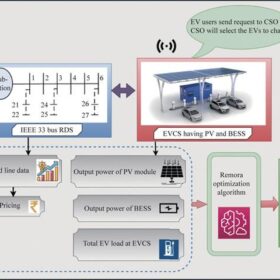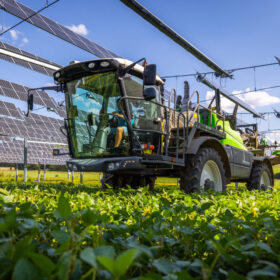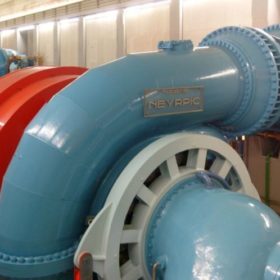Waaree Group secures order for 10 MWh battery energy storage system
Waaree Group has secured a 10 MWh battery energy storage system (BESS) order from a major infrastructure development company. The BESS will be deployed in Tamil Nadu.
India installed record 4.9 GW rooftop solar in 9M 2025, says Mercom
India added a record 4.9 GW of rooftop solar capacity in the first nine months (9M) of calendar year (CY) 2025, with 2.1 GW installed in Q3 alone.
Australia breaks record with 5.2 GW solar installations in 2024: IEA report
An International Energy Agency survey of solar power applications in Australia shows 5.2 GW of installations in 2024 were achieved and the total capacity of solar at 40 GW, includes 26.1 GW of distributed systems and 13.4 GW of centralised installations.
India adds ‘record’ 20.1 GW renewable energy capacity in 5M FY26: A paradigm shift and its impact
India’s energy story has moved beyond ambition to acceleration. Between April and August 2025, a 123 percent YoY jump in renewable energy capacity additions is not just a headline, it’s a signal of structural maturity, industrial resilience, and policy coherence. If the country sustains this trajectory through FY26 and FY27, it could well emerge as the world’s third-largest market for renewable deployment, behind only China and the United States.
India’s strong monsoon cuts solar generation by 15% in September to October
In a new weekly update for pv magazine, Solcast, a DNV company, reports that India’s solar generation potential was significantly hampered during September and October due to an intensified southwest monsoon, resulting in a 15% decrease in irradiance compared to the long-term average.
“Renewable energy emerging as India’s next big jobs engine”
Balasubramanian A, senior vice president at TeamLease Services, shares insights on workforce requirements, skill gaps, and the key trends shaping India’s renewable energy industry.
How to balance power losses, cost effectiveness in PV-BESS-driven EV charging stations
Scientists in India have developed a novel method to optimize the placement of an EV charging station on the grid, along with the size of its PV generation and battery storage. They have also created a framework for an innovative slot offering.
France agrivoltaics trials show early crop and livestock gains
Data from agrivoltaic canopy trials in France, developed by energy producer TSE and the French National Research Institute for Agriculture, Food and the Environment (INRAE), indicate measurable temperature, water-balance, and yield effects that reinforce the role of managed agrivoltaics in farm-level climate adaptation.
India installed 26.6 GW solar power capacity in first nine months of 2025
India installed solar power generation capacity totaling 26.6 GW in the first nine months (9M) of the calendar year 2025, an increase of 53.7% compared to 17.3 GW added in 9M 2024, according to Mercom India’s newly released report. Large-scale solar accounted for 81.5% of the capacity commissioned in 9M 2025, while rooftop solar contributed 18.5%.
South Korea mandates solar systems at public parking lots from late November
The South Korean government says all public parking lots larger than 1,000 square meters will be required to install solar power systems from the end of this month, as part of a nationwide policy to accelerate renewable energy adoption in urban areas.















